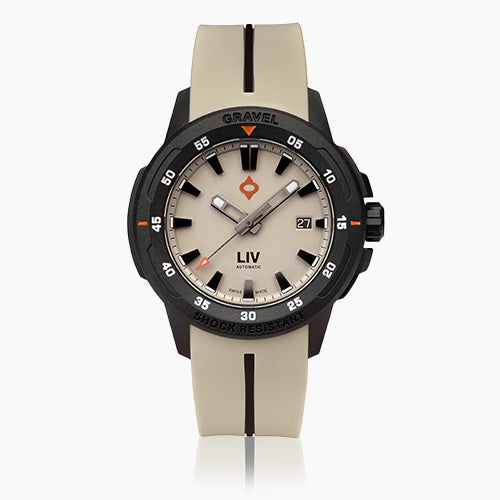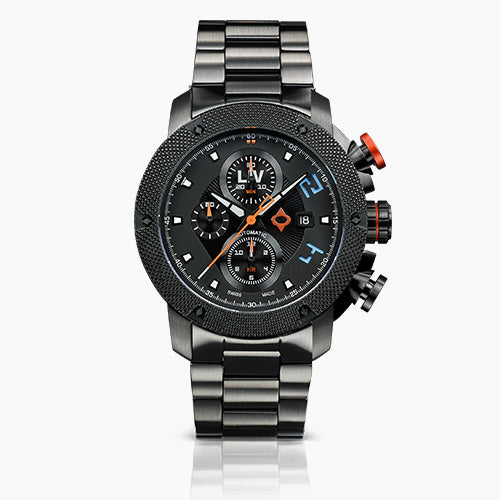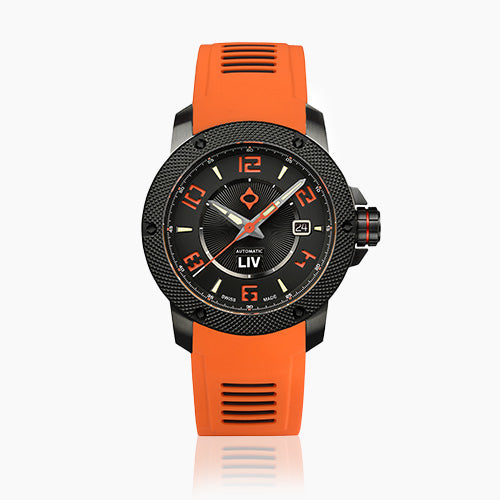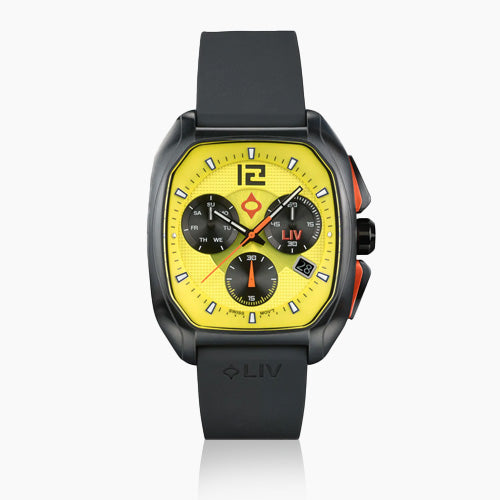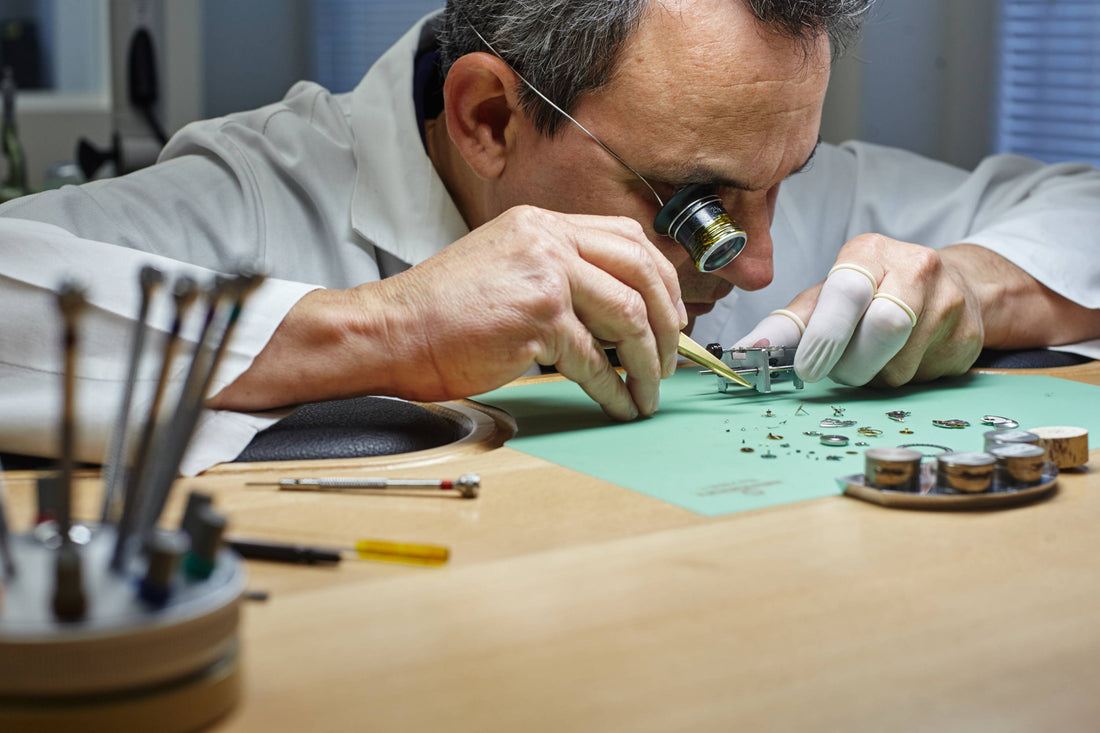
Watch Accuracy Explained
Share
A LITTLE PERSPECTIVE, PLEASE

Keep thinking about it; no electricity, no light except that provided by lamps or candles, no controlled heat or cooling. Their tools were likely primitive, and everything was cut, shaped, and finished by hand. I mean, really, how did they manage to cut the tiny teeth in the gears with precision and repeatability? Our ancestors were remarkable people, and thanks to their genius and skill, we are able to enjoy the fascinating hobby of watch collecting today. Mind exercise over.
THE ENEMY OF MECHANICAL MOVEMENT ACCURACY
When it comes to mechanical watches, friction, precision, and gravity conspire to reduce accuracy. The movements convert the energy stored in the mainspring into rotational movement of the gear train. In turn, the gears move the hands and power other complications like chronometer functions and power reserve displays.
The gears are held between plates, and their shafts rotate in tiny holes. For especially critical gears, watchmakers insert minuscule synthetic rubies (which, by the way, are identical to real rubies without the cost). Rubies provide a silky smooth surface that reduces friction considerably.
At other shaft locations, the watchmakers use little drops of oil to reduce friction. Prior to today's synthetic options, the oil could become gummy. This was due to age, disuse, dirt getting inside the case, and so forth. As you expect, gummy oil increases friction. Friction up, accuracy down.
Another enemy of accuracy in mechanical movements is wear and tear on the movement's rotating parts. Over time, the physical interaction of the gears, spring, and plates can lead to wear.

- Chaz Chazanow
Co-Founder at LIV Watches
ACCURACY OF MECHANICAL MOVEMENTS
So, just how accurate can a mechanical movement be, given the challenges presented by friction, etc.? You might be surprised to find out that mechanical movements can be accurate to within a few seconds per day. Okay, since some accuracy ratings are on the horizon, let's determine how many seconds you have each day:
Total seconds/day = (60 seconds x 60 minutes x 24 hours) = 86,400 seconds.

The quality of the movement will determine the accuracy. Premium Swiss movements like those engineered by ETA and Sellita are accurate to +/- 12 seconds per day. What is the accuracy of a movement that loses this number of seconds?
Accuracy % = (12/86,400) = 0.000138888%, plus or minus.
But wait, there's more. Movement manufacturers can submit their masterpieces to the Contrôle Officiel Suisse des Chronomètres (COSC) for rigorous accuracy testing. This organization will provide a report and certificate documenting the accuracy. A COSC certified mechanical movement can be accurate to within +6/-4 seconds per day.
+ Accuracy % = (6/86,400) = 0.000069444%
- Accuracy % = (4/86,400) = 0.000046396%
These seem like reasonable accuracy rates on a daily basis.
ACCURACY OF QUARTZ MOVEMENTS
Drumroll, please. Now it is time to show how accurate a quartz movement can be. The invention of the quartz movement was revolutionary, and it nearly destroyed the Swiss watch industry. Fortunately, nearly is the operative term. The Swiss watch industry is robust and thriving. It offers both mechanical and quartz movements.

Unlike their mechanical counterparts, friction, gravity, and wear don't impact accuracy, particularly in digital movements. However, these movements are not without their accuracy enemies. Temperature is one culprit. Extremes of temperature can affect accuracy. Battery performance is another one. Most batteries run until they stop. If something impacts the discharge rate of the battery, accuracy can suffer.
Regular quartz movements boast an accuracy of +/- 100 seconds per year. Time for more math.
Seconds per year = (86,400 x 365) = 31,536,000 second.
Accuracy % = (100/31,536,000) = my calculator doesn't have enough display room. Let's just say you are not likely to notice this level of inaccuracy.
Quartz movements can receive a COSC rating too. There are also thermally compensated movements that offer accuracies between +/- 5 to +/-25 seconds per year.
- Esti Chazanow
Co-Founder at LIV Watches
WHICH IS THE BEST MOVEMENT?
Each movement type has its own legions of fans. And there really is no wrong choice. Purists love the mechanical movement with its elegant micro-engineering and roots in the origins of horology. Quartz fans are no less passionate about their timepieces. Quartz watches are "set and forget" with their battery power. And the use of electronics engineering enables these watches to provide functions and complications you cannot replicate using a mechanical movement.
Here at LIV, we offer both types of movements, sourced from the best Swiss movement makers. Your collection has room for both and should have examples of each. If you are running late for an appointment, be sure to strap on your mechanical favorite. Your excuse for tardiness? "Hey, this thing is only accurate to +/- 12 seconds per day. Cut me some slack." Let us know how that works out for you.

The Crafting of a LIV Watch in Stabio, Switzerland




